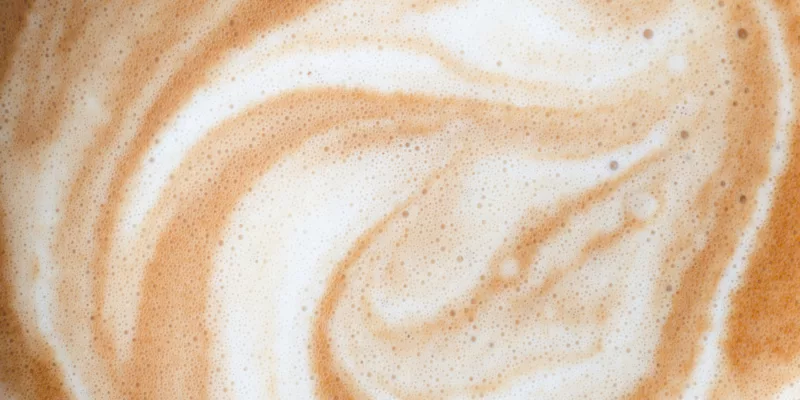
Microcrystalline cellulose (MCC) (460/466) is available in powdered and colloidal forms. The colloidal form contains CMC and is used for suspension and stabilisation. It requires shear for activation. The non-colloidal form is used as a flow aid, flavour or spice oil carrier, extrusion aid or tableting excipient.
Application
| Application | Function |
|---|---|
| Fortified milk | Long term suspension of insoluble material. Improves creaminess |
| Low fat Ice Cream | Improves creaminess and opacity. Reduces meltdown. |
| Low fat salad dressings | Improves mouth feel, creaminess and opacity. Stabilises emulsion and improves cling |
| Batters & Breadings | Improves cling, reduces fat absorption during frying and sogginess |
| Chocolate milk | Long term Cocoa suspension and mouth feel. |
| Whipped toppings | Stabilises foam structure and emulsion. |
| Bake-stable fillings | Reduces boil-out, improves cling and opacity |
Chemistry
Microcrystalline cellulose (MCC) (E460) is derived from naturally occurring cellulose similar to that found in fruits and vegetables. From this natural source, products are customised through various unique, co-processing techniques. These help to standardise products to meet specific viscosity, gelling, suspension and stabilizing properties.
The raw material for MCC is purified plant fibre, or alpha cellulose, and it is composed of millions of microfibrils. Each microfibril is composed of two regions:
- The paracrystalline region, an amorphous flexible mass of cellulose chains, and
- The crystalline region, which is composed of tight bundles of microfibrils in a rigid linear arrangement
During processing, the fibrous material is hydrolysed (depolymerised) to remove the amorphous regions, leaving only the crystalline bundles. The resulting cellulose bundles can be processed by two methods to produce either powdered or colloidal MCC.
Powdered MCC
Drying the crystalline bundles results in aggregates of very porous particles that absorb large amounts of water or oil onto the surface.
Colloidal MCC
Properly dispersed, colloidal MCC sets up into a 3-dimensional network of these colloidal particles that imparts stability in the finished product; the system is held together by weak hydrogen bonding.
The formation of this insoluble, 3-dimensional matrix creates a physical network that affects the movement of moisture and gives the colloidal grades of MCC their functional properties.
Properties
The gel network formed by colloidal MCC offers the following properties:
Thixotropy – gels made with MCC readily break down with shear; when the shear is removed, the gel will reform over time with minimal loss to viscosity.
Foam Stability – MCC is a premier foam stabiliser. The microcrystalline network thickens the water phase between air cells and acts as a physical barrier to maintain the air cells in suspension. Although MCC does not have significant film forming properties, it does work to increase the film strength.
Stabilise Emulsions – MCC forms a colloidal network of particles when properly dispersed in water. This colloidal network sets up at the oil-water interface to physically prevent the oil globules from coalescing. The MCC acts to stabilize the emulsion as well as thicken the water phase to improve cling properties.
Heat Stability – temperature changes have little or no effect on the functionality and viscosity of MCC dispersions. This property is extremely important in the preparation of heat stable products, particularly when acids are present. MCC will hold up during heat processing, including baking, retorting, UHT processing and microwave heating with minimal loss in viscosity.
Shorten Texture – MCC can be used to modify textures- it can shorten textures or add body without creating a gummy or pasty texture. In food systems this quality results in a cleaner mouth feel and excellent flavour release.
Suspend Particles – the stability and thixotropic rheology of MCC makes it a useful suspension aid. In an aqueous system, the 3-dimensional matrix sets-up at low-use levels to effectively suspend particulates.
Replace Fats and Oils – MCC can be used to replace some or all of the oil in emulsion type products. The MCC mimics many of the rheological properties associated with full oil emulsions.
Control Ice Crystal Growth – the 3-dimensional matrix created with dispersed colloidal MAC and the surface area of the microcrystals create a stabilising system that maintains a homogeneous state during freeze/thaw cycles. MCC helps prevent moisture migration and inhibits the aggregation of protein and other solids. The 3-dimensional network formed with MCC is extremely effective in maintaining the three-phase system of water/fat/air.
Extend Starches – using a ratio of 4 parts starch/1 part MCC allows processors to reduce the amount of starch thickener required by as much as 25%. The MCC will also improve heat and shear stability over prolonged process cycles.
Opacity – insoluble cellulose crystallites act as opacifiers and can add whiteness to products.
